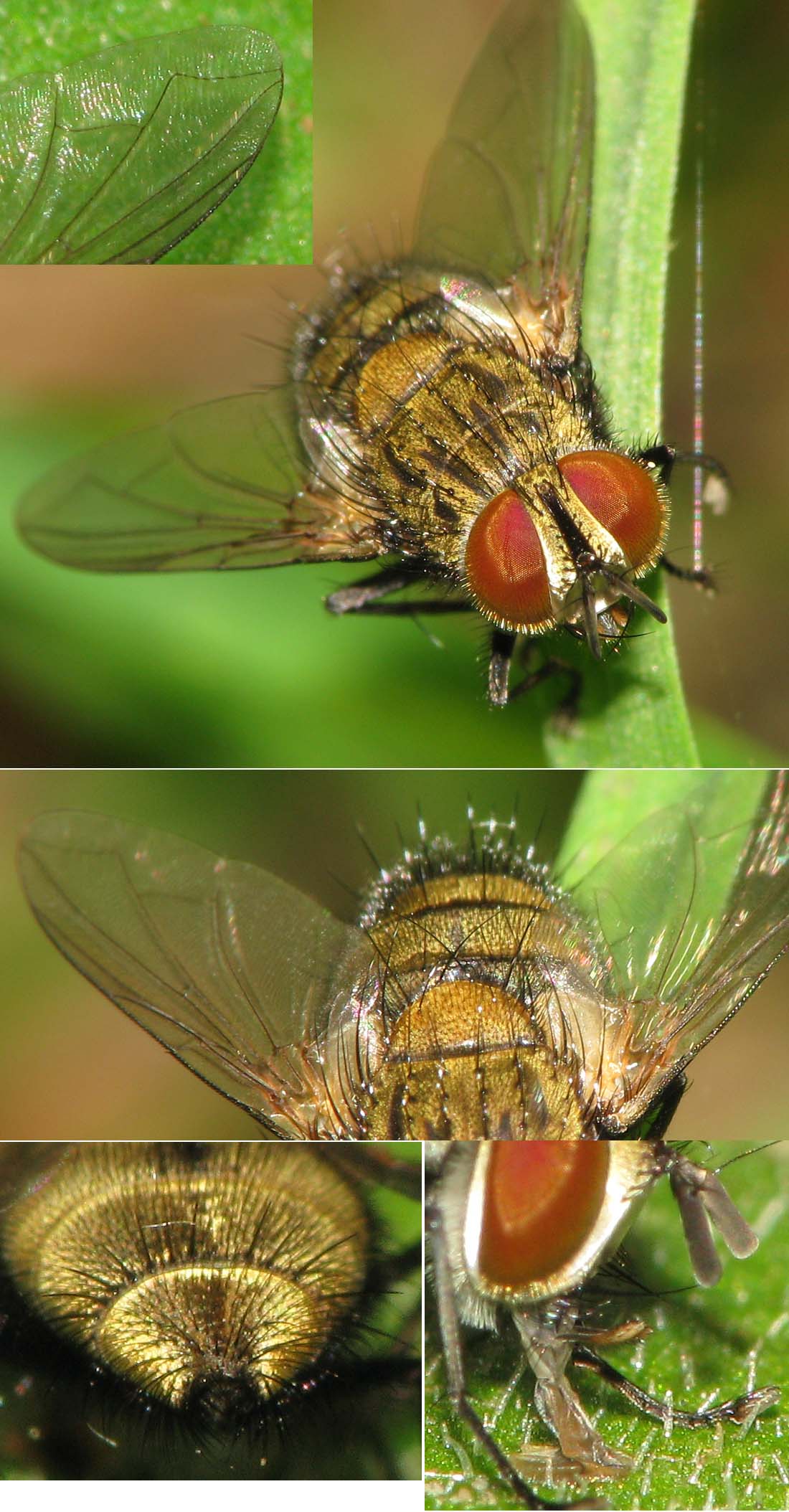Diptera.info :: Identification queries :: Diptera (adults)
Who is here? 1 guest(s)
|
Yellow Tachinid - Carcelia? Better Senometopia.
|
|
| Sundew |
Posted on 15-07-2022 02:32
|
|
Member Location: Berlin and Baden-Württemberg, Germany Posts: 3931 Joined: 28.07.07 |
Hi, Here is a nice Tachinid from 8th July, seen in a wood in southwestern Germany, about 20 km west of Stuttgart. With the key http://www.tachin...chweb.aspx I got to Carcelia, and the key by Tschorsnig & Herting (https://www.zobod...1-0170.pdf) made me think of C. bombylans. How close did I come? Comments are appreciated! Sundew Sundew attached the following image:  [284.17Kb] Edited by Sundew on 15-07-2022 15:51 |
|
|
|
| Sundew |
Posted on 15-07-2022 02:32
|
|
Member Location: Berlin and Baden-Württemberg, Germany Posts: 3931 Joined: 28.07.07 |
Some more details.
Sundew attached the following image:  [236.27Kb] |
|
|
|
| Zeegers |
Posted on 15-07-2022 11:11
|
|
Member Location: Soest, NL Posts: 19133 Joined: 21.07.04 |
Tibiae are dark (?), so should be Senometopia. Difficult genus Theo |
|
|
|
| Sundew |
Posted on 15-07-2022 15:49
|
|
Member Location: Berlin and Baden-Württemberg, Germany Posts: 3931 Joined: 28.07.07 |
I get your point. In Moschweb, I lost the option for Senometopia when I clicked on "apical setae crossed and tilted upwards by 30-60°" because I had estimated the angle to the abdomen to be about 45°. But if you measure in extension of the scutellum slope, it is smaller. Tschorsnig & Herting 1994 separate the genera according to the presence or absence of a strong ventral bristle on T2. I cannot detect such a bristle, even though I do not have a very suitable view. So let's assume Senometopia, the fly also looks very similar to the one you have identified for https://insektari...topia-spp/. Since it has 4 postsutural dc, T&S 94 says "tibiae yellow, somewhat blackened on its ventral side basally and apically", and this colouration matches quite well. (With dark tibiae, there should be only 3 postsutural dc.) The combination of characters - fore tibia with one posterior bristle - pubescence of tergites 3 and 4 dense and even, without discal bristles - pruinosity yellowish - lateral longitudinal black stripe of the thorax behind the suture goes up to the last dc and does not or hardly become narrower towards the rear leads to S. intermedia, that would be another rare species I would have met. I will archive the pictures under "S. cf. intermedia". Thank you very much! |
|
|
|
| Jump to Forum: |













